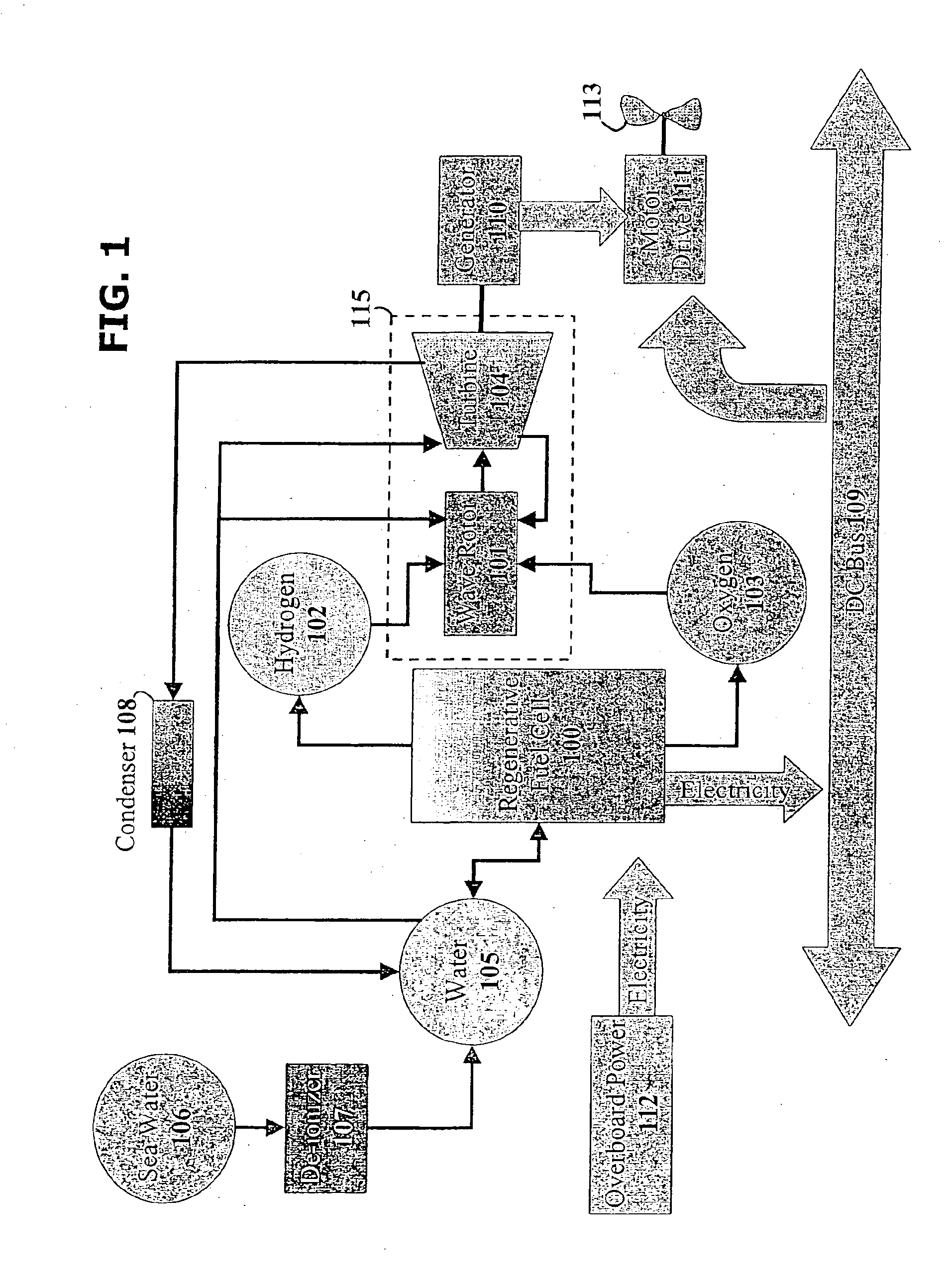Wave rotor based power and propulsion generation for a marine vessel
a technology of wave rotors and marine vessels, which is applied in the direction of marine propulsion, special-purpose vessels, vessel construction, etc., can solve the problems of inability to provide the sustained high power required by the next generation of underwater vehicles, limited conventional power/propulsion generation systems for underwater vessels, and inability to achieve the effect of conventional power/propulsion generation systems
- Summary
- Abstract
- Description
- Claims
- Application Information
AI Technical Summary
Benefits of technology
Problems solved by technology
Method used
Image
Examples
Embodiment Construction
[0020]Although this invention is applicable to numerous and various types of power generation and propulsion systems for marine vessels, it has been found particularly useful in the environment of power generation systems for small-scale underwater vessels and UUVs. Therefore, without limiting the applicability of the invention to underwater vessels, the invention will be described in such environment.
[0021]With reference to FIG. 1, there is a schematic representation of a closed loop power / propulsion generation system for an underwater vehicle. Hydrogen is stored in a hydrogen tank 102 and oxygen is stored in an oxygen tank 103. The hydrogen tank 102 and the oxygen tank 103 are in fluid communication with a fuel cell 100. Seawater 106 is de-ionized through a de-ionizer 107 and stored in a water tank 105. The hydrogen and oxygen gases stored in the hydrogen tank 102 and the oxygen tank 103, respectively, are the reactants for the regenerative fuel cell 100 that produces electricity ...
PUM
 Login to View More
Login to View More Abstract
Description
Claims
Application Information
 Login to View More
Login to View More - R&D
- Intellectual Property
- Life Sciences
- Materials
- Tech Scout
- Unparalleled Data Quality
- Higher Quality Content
- 60% Fewer Hallucinations
Browse by: Latest US Patents, China's latest patents, Technical Efficacy Thesaurus, Application Domain, Technology Topic, Popular Technical Reports.
© 2025 PatSnap. All rights reserved.Legal|Privacy policy|Modern Slavery Act Transparency Statement|Sitemap|About US| Contact US: help@patsnap.com



